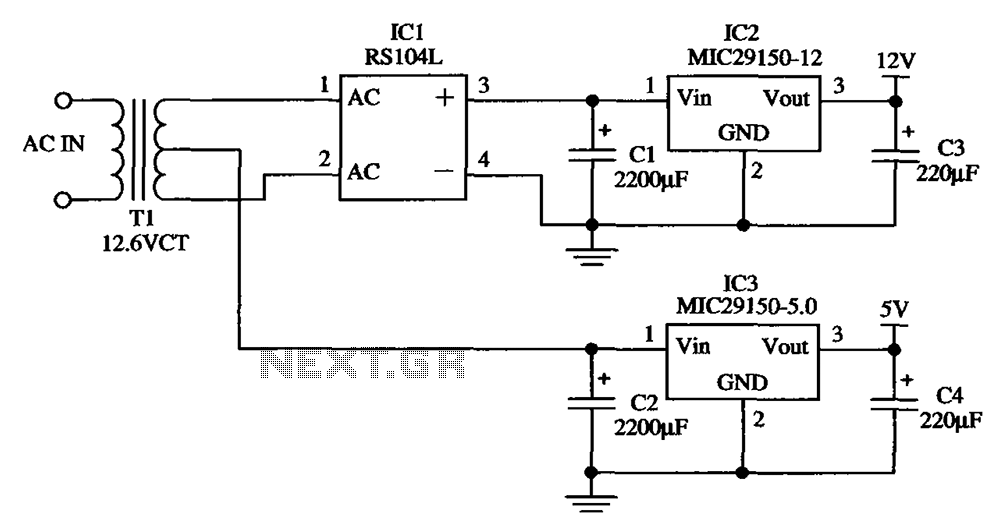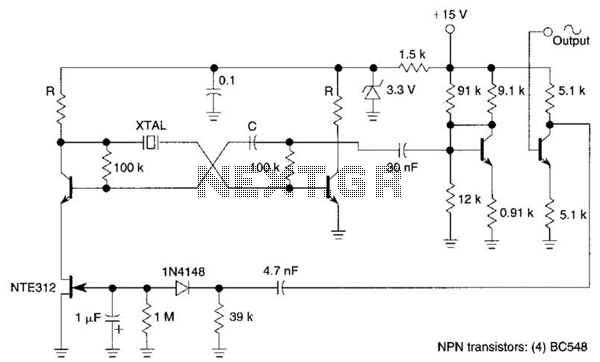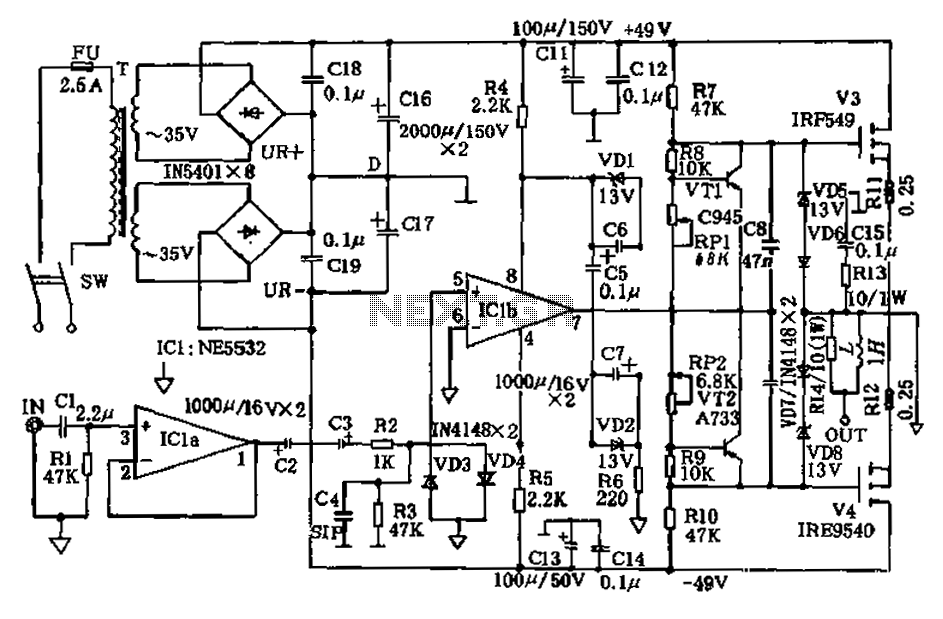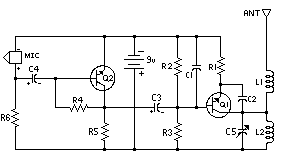
Stereo Tv Decoder Circuit

Q1 is an audio amplifier, and U1 is utilized as a 31.5 kHz subcarrier, which is comparable to the 38 kHz FM multiplex. The pilot frequency is 15.734 kHz.
In this circuit, Q1 serves as the audio amplifier, responsible for boosting the audio signal to a suitable level for further processing or output. The audio amplifier typically operates in a linear region to ensure that the fidelity of the audio signal is maintained without distortion. The gain of Q1 can be set by selecting appropriate feedback resistors, allowing for flexibility in audio output levels.
U1 operates at a frequency of 31.5 kHz, which functions as a subcarrier for the audio signal. This frequency is particularly relevant in applications involving frequency modulation (FM) where multiplexing is required. The 38 kHz frequency mentioned in the context of FM multiplexing is often used in stereo broadcasts, where it helps in the separation of left and right audio channels. The 31.5 kHz subcarrier may be used to modulate additional information or channels within the audio signal.
The pilot frequency of 15.734 kHz is crucial for synchronization purposes. In FM broadcasting, a pilot tone is used to indicate the presence of a stereo signal. It allows receivers to lock onto the signal and demodulate it accurately, ensuring that the audio output is clear and free from interference. This frequency is typically generated using a crystal oscillator or a phase-locked loop (PLL) circuit to ensure stability and precision.
Overall, this circuit combines the functionalities of audio amplification and subcarrier generation to facilitate high-quality audio transmission, particularly in FM multiplexing applications. Proper design considerations, such as filtering and impedance matching, should be taken into account to optimize performance and minimize signal degradation. Ql is an audio amplifier and Ul is used as a 31.5-kHz subcarrier, which is similar to 38-kHz FM MPX. Pilot frequency is 15.734 kHz.
In this circuit, Q1 serves as the audio amplifier, responsible for boosting the audio signal to a suitable level for further processing or output. The audio amplifier typically operates in a linear region to ensure that the fidelity of the audio signal is maintained without distortion. The gain of Q1 can be set by selecting appropriate feedback resistors, allowing for flexibility in audio output levels.
U1 operates at a frequency of 31.5 kHz, which functions as a subcarrier for the audio signal. This frequency is particularly relevant in applications involving frequency modulation (FM) where multiplexing is required. The 38 kHz frequency mentioned in the context of FM multiplexing is often used in stereo broadcasts, where it helps in the separation of left and right audio channels. The 31.5 kHz subcarrier may be used to modulate additional information or channels within the audio signal.
The pilot frequency of 15.734 kHz is crucial for synchronization purposes. In FM broadcasting, a pilot tone is used to indicate the presence of a stereo signal. It allows receivers to lock onto the signal and demodulate it accurately, ensuring that the audio output is clear and free from interference. This frequency is typically generated using a crystal oscillator or a phase-locked loop (PLL) circuit to ensure stability and precision.
Overall, this circuit combines the functionalities of audio amplification and subcarrier generation to facilitate high-quality audio transmission, particularly in FM multiplexing applications. Proper design considerations, such as filtering and impedance matching, should be taken into account to optimize performance and minimize signal degradation. Ql is an audio amplifier and Ul is used as a 31.5-kHz subcarrier, which is similar to 38-kHz FM MPX. Pilot frequency is 15.734 kHz.





